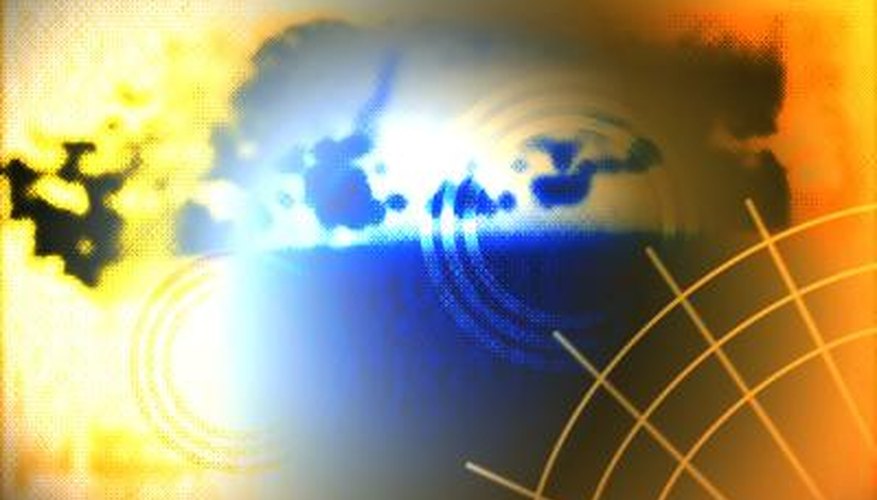Vector and bitmap are two formats for creating, storing and processing computer graphics. Although both techniques allow images to be shared online and in print, key differences between them affect how images are produced and reproduced. Vector graphics are created using mathematical formulas based on points, while bitmap files are based on pixels, small bits of colour and brightness which make up a complete image.
Bitmap Graphics
Bitmap, or raster graphics, such as photographs and images created in paint programs, are made up of pixels, tiny blocks which carry information about colour and brightness. Bitmap images can be painted, erased, smudged and manipulated in a variety of ways, and individual pixels can be modified one at a time, to create a photorealistic appearance. Bitmap imaging is resolution-dependent. When a bitmap image is enlarged, it can look ragged or blurry.
- Bitmap, or raster graphics, such as photographs and images created in paint programs, are made up of pixels, tiny blocks which carry information about colour and brightness.
Vector Imaging
Vector imaging is preferred for precision drawing and is based on mathematical extrapolation. A vector graphic is created by establishing several control points with a pen or pencil tool. Lines between points are placed by the computer and image size is changed by adjusting size proportionately. Shapes are changed by manipulating the "handles" which appear at the control points. Preset shapes and symbols are also available in vector-based graphics programs. Vector graphics are resolution-independent and scalable. Regardless of size, they remain crisp and clear.
- Vector imaging is preferred for precision drawing and is based on mathematical extrapolation.
- Lines between points are placed by the computer and image size is changed by adjusting size proportionately.
File Formats
Both bitmap and vector graphics can be printed, imported or exported between graphics programs such as Adobe Illustrator and Photoshop, or posted on the Internet. Vector graphics imported into bitmap-based graphics software must be rasterised, or converted to a bitmap format, for editing. Bitmap images can be saved as BMP, TIF, GIF or JPG files, depending on their destination of print or web. Vector graphics can be saved as SWF, SVG, GIF or PNG formats, and both types of graphics can be saved as PDF files for high quality printing.
- Both bitmap and vector graphics can be printed, imported or exported between graphics programs such as Adobe Illustrator and Photoshop, or posted on the Internet.
- Vector graphics can be saved as SWF, SVG, GIF or PNG formats, and both types of graphics can be saved as PDF files for high quality printing.
Applications
For general imaging purposes, bitmap graphics are more widely used than vector images. Bitmap files can be read by most bitmap based software, and formats like JPG are accepted virtually everywhere. Bitmap images are photorealistic even when highly manipulated, and are easily converted for use on the Internet. Vector graphics require time to create and may be more appropriate when an image needs to be reproduced repeatedly at different sizes, such as a logo on stationery, business cards and signs.
- For general imaging purposes, bitmap graphics are more widely used than vector images.
- Bitmap images are photorealistic even when highly manipulated, and are easily converted for use on the Internet.
